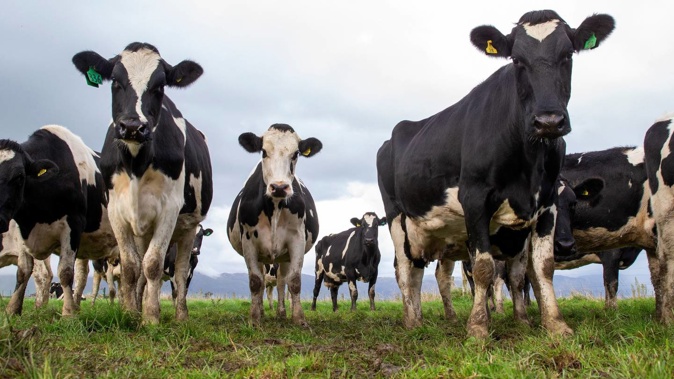
Ongoing efforts to tackle one of our biggest emissions headaches – how to slash the amount of greenhouse gases coming from farms – have reached a major milestone, with New Zealand’s first-ever approval of a methane inhibitor.
The Environmental Protection Authority (EPA) today announced its widely-anticipated decision to approve a feed additive designed to reduce methane emissions in livestock.
It comes more than two years after Netherlands-based DSM Nutritional Products applied to the regulator to import or manufacture a substance containing about 10 to 25 per cent of the unintroduced chemical 3-nitrooxypropanol (3-NOP).
The global company’s product, Bovaer, has been proving promising, with formulations for pasture-based farming cutting methane by more than 30 per cent for up to six hours after the additive is fed to cattle.
Its eventual use in New Zealand farms could be a game-changer for the tough job of tackling agricultural emissions, of which methane - belched by ruminant livestock like cows, sheep and deer - makes up nearly three quarters.
Research shows agricultural emissions of methane and nitrous oxide have climbed by about 17 per cent since 1990, but improvements in modern farming practices have been gradually helping to lower the sector’s greenhouse gas footprint.
All the while, the industry has been under pressure to help meet nationally-set targets to cut biogenic methane by 24 to 47 per cent below 2017 levels by 2050 – with 10 per cent of that required by the end of this decade.
“Substances for climate change mitigation are still new to New Zealand and are important for meeting New Zealand’s international obligations under climate agreements,” said Chris Hill, the EPA’s general manager of hazardous substances and new organisms.
“This is the country’s first application for a methane inhibitor, so it was important to confirm how 3-NOP would be used and the information we required to carry out an appropriate risk assessment.”
The lengthy process – recently criticised by National’s Sam Uffindell over the time taken - involved a range of meetings and technical reviews, along with a Māori Impact Assessment.
“We carry out a comprehensive assessment for every hazardous substance application. Our assessments are focused on scientific data and evidence, economic information, and local information, as well as cultural perspectives to ensure we continue to protect people and our environment,” Hill said.
“To ensure this was a robust assessment, the application was subject to a number of requests for additional information.
“DSM also put the application on hold for around eight months, so they could compile further information for the risk assessment process.”
As 3-NOP could pose significant risks to people in concentrated form, the EPA had put in place rules for safely using the substance.
This application also didn’t cover lower concentrations of 3-NOP likely to be added in the final products used in agriculture or by farmers - meaning some formulations might require separate EPA approval.
The EPA was meanwhile working closely with the Ministry for Primary Industries on the regulation of methane (and nitrogen) inhibitors, with the aim of streamlining the EPA’s application and assessment process for these substances.
Take your Radio, Podcasts and Music with you









